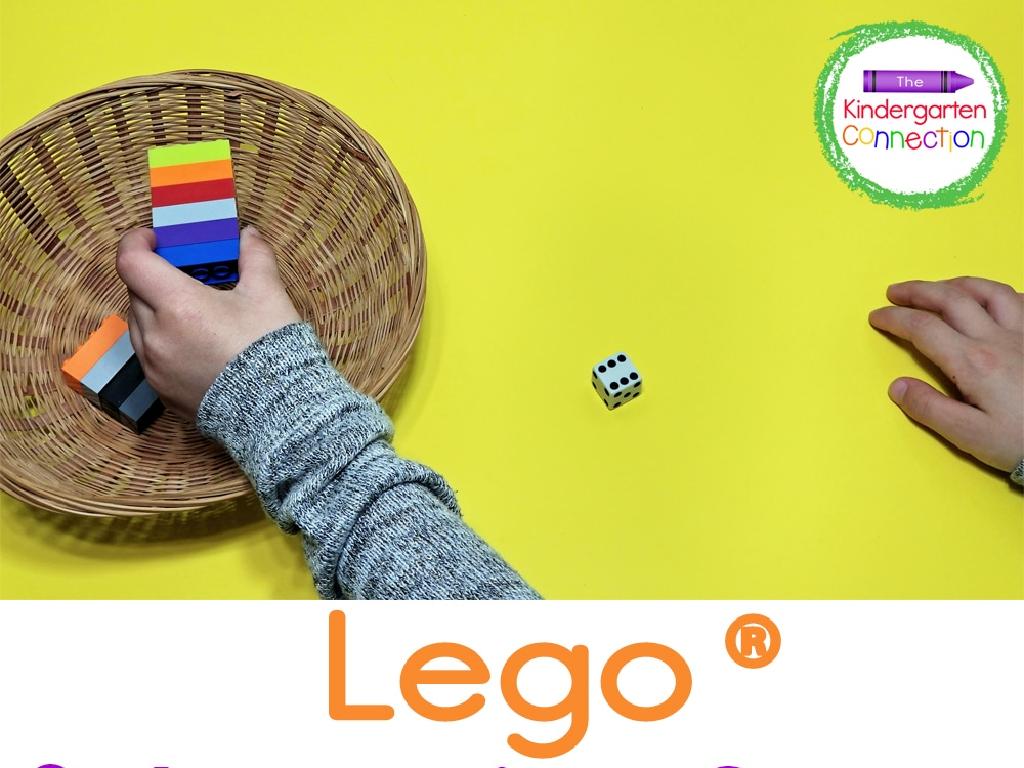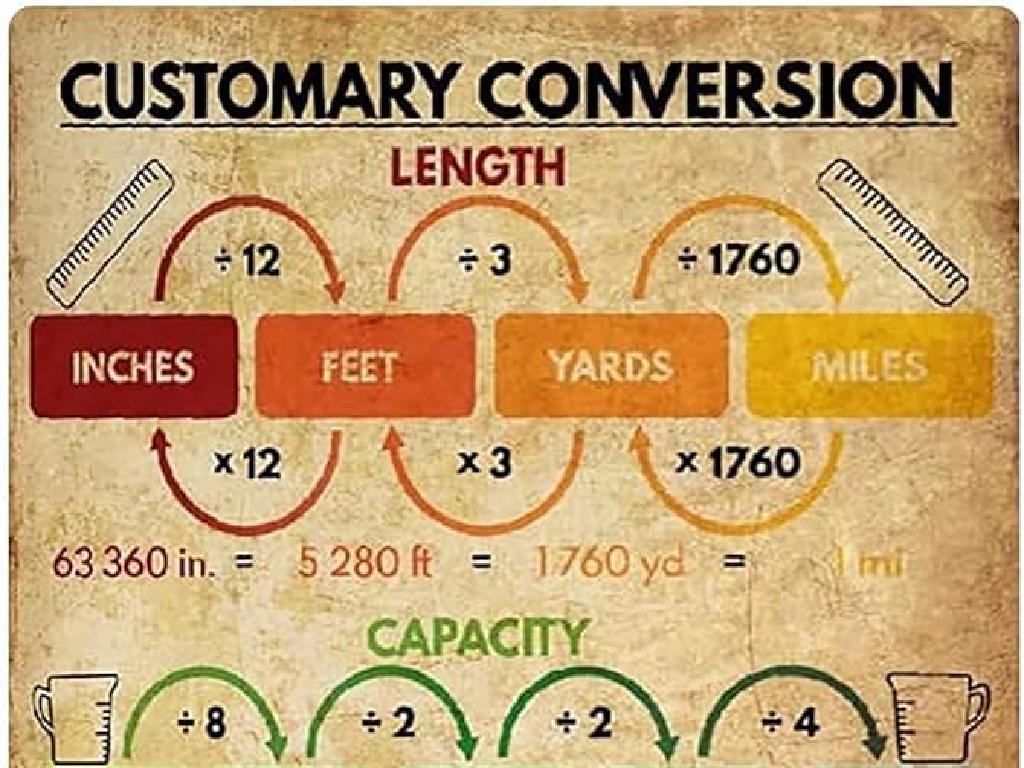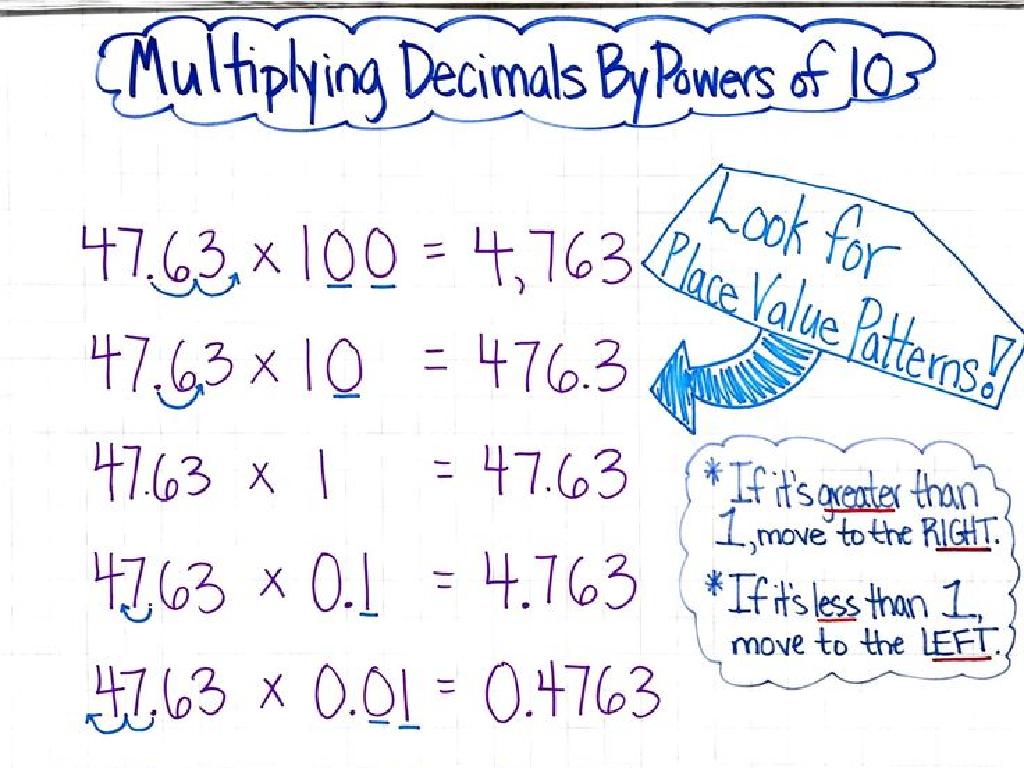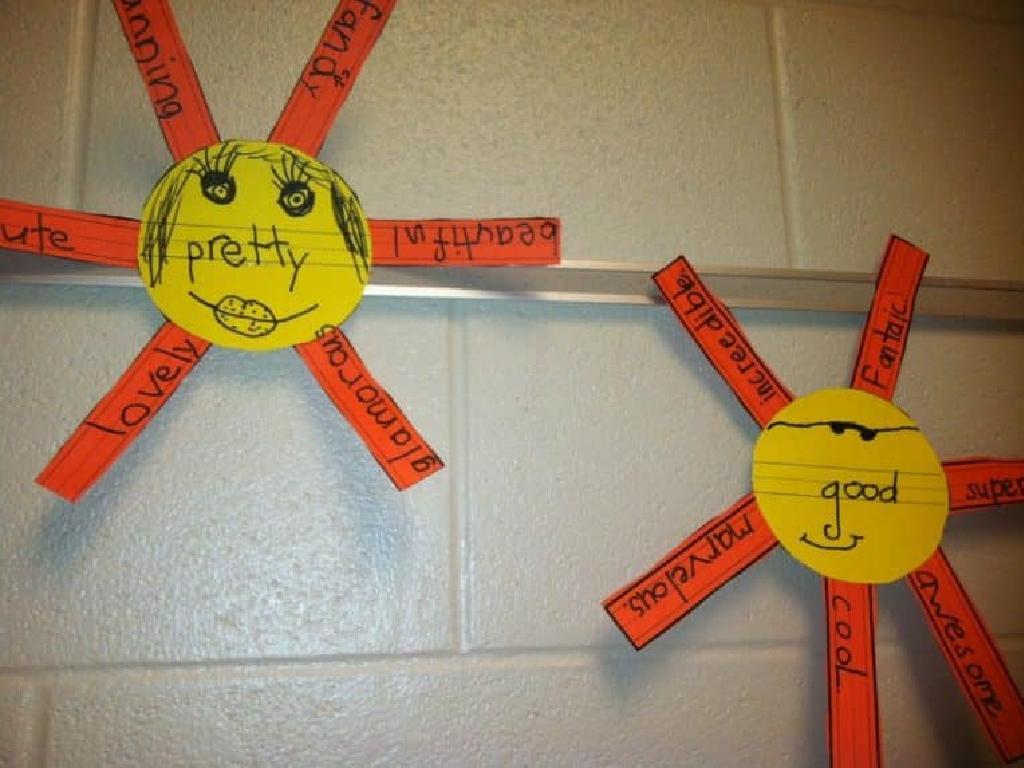Count Forward And Backward By Twos, Fives, Tens, And Hundreds
Subject: Math
Grade: Second grade
Topic: Skip-Counting And Number Patterns
Summary: This second grade math presentation teaches skip-counting and identifying number patterns, focusing on counting forward and backward by twos, fives, tens, and hundreds. Through engaging visuals, hands-on activities, and movement-based games like skip-counting hopscotch, students develop faster counting skills and strengthen their understanding of number sequences. Real-life connections and practice exercises provide a solid foundation for multiplication, division, and everyday math confidence.
Please LOG IN to download the presentation. Access is available to registered users only.
View More Content
Welcome to Skip-Counting!
– Understanding skip-counting
– Jumping over numbers in a pattern, like hopping!
– Why skip-counting is handy
– Helps us count things faster and understand patterns
– Counting by twos
– Start at 2 and add 2 each time: 2, 4, 6, 8…
– Counting by fives, tens, and hundreds
– Practice with bigger jumps: 5, 10, 15… and 10, 20, 30… and 100, 200, 300…
|
This slide introduces the concept of skip-counting to second graders, which is a fundamental skill in understanding number patterns and preparing for multiplication. Explain that skip-counting is like hopping over numbers and is a faster way to count. Emphasize its usefulness in everyday situations like counting pairs of shoes or groups of items. Start with counting by twos to make it simple, then progress to larger numbers. Use visual aids like number lines or counters to help students visualize the jumps. Encourage participation by having students count aloud together and practice with different starting points. This activity sets the groundwork for future math skills, so ensure students grasp the concept with plenty of examples and hands-on practice.
Counting by Twos: Pairing Socks
– Learn to count by twos
– Visualize pairing socks
– Each pair of socks adds up to two
– Sequence: 2, 4, 6, 8…
– This is the start of a pattern
– Can you keep going?
– Try to reach 20 by continuing the pattern
|
This slide introduces the concept of skip counting by twos, which is a foundational skill in understanding even numbers and preparing for multiplication. Use the analogy of pairing socks to make it relatable for second graders. Start with the sequence on the slide and then ask the students to continue the pattern until they reach 20 or beyond. Encourage them to use physical objects like counters or drawings to visualize the pairs. This activity will help them recognize patterns and understand that skip counting is a faster way to count than by ones. Make sure to walk around the classroom to assist any student who may be struggling and to praise those who are succeeding.
Counting by Fives
– Let’s skip-count by fives!
– Imagine the fingers on your hand
– Each finger represents 5, just like counting 5, 10, 15 for 3 fingers
– Sequence: 5, 10, 15, 20…
– This is the start of counting by fives. What numbers follow?
– Can you guess the next numbers?
– Think about adding 5 more to the last number you said
|
This slide is designed to teach second graders the concept of skip-counting by fives. Use the analogy of fingers on a hand to make it relatable and easy to visualize. Start with 5 and add 5 for each additional finger to demonstrate the pattern. Encourage the students to continue the sequence beyond 20 to reinforce the concept. Ask them to predict the next few numbers in the sequence to engage them in active learning. You can also incorporate physical activities like clapping or tapping the desk every time they count by five to make the learning process more interactive and fun.
Counting by Tens
– Counting by tens is exciting!
– Visualize ten blocks grouped together
– Imagine 10 blocks as one unit
– Practice: 10, 20, 30, 40…
– Counting in tens: 50, 60, 70, 80…
– Can you continue the sequence?
– Try to reach 100 by adding ten each time!
|
This slide is designed to teach second-grade students the concept of skip-counting by tens. Start by engaging them with the idea that counting by tens is not only important but also enjoyable. Encourage them to visualize groups of ten blocks to help them understand the concept of bundling in tens. Use the sequence on the slide to start counting together as a class, and then prompt them to continue the pattern beyond the given numbers. The goal is for students to recognize the pattern and confidently count by tens up to at least 100. As an activity, students can work with physical blocks or draw representations to group and count by tens, reinforcing the visual aspect of the concept.
Counting by Hundreds
– Understanding big numbers
– Imagine a 100 chart
– Picture the chart to see the jumps of 100
– Count: 100, 200, 300, 400…
– Each step adds another 100
– Practice counting together
– We’ll count as a class to learn together
|
This slide introduces students to the concept of counting by hundreds, which is a significant milestone in understanding larger numbers and developing number sense. Encourage the students to visualize a 100 chart as a tool to help them see the pattern when counting by hundreds. Start by counting together as a class, emphasizing the pattern that each new number is 100 more than the previous one. This activity will help students become comfortable with larger numbers and recognize patterns in number sequences. As an extension, you can ask students to count backwards from a higher number to reinforce the concept.
Exploring Skip-Counting Patterns
– Skip-counting uncovers patterns
– Use a number line to skip-count
– A number line helps visualize the jumps
– Discover the pattern for twos
– Counting by 2s: 2, 4, 6, 8, …
– Explore patterns for fives, tens, hundreds
– Counting by 5s: 5, 10, 15, 20, …
|
This slide introduces students to the concept of skip-counting and how it reveals patterns in numbers. Begin by explaining that skip-counting is like hopping over numbers and landing on every second, fifth, tenth, or hundredth number. Show them a number line and demonstrate how to skip-count by different intervals. For twos, point out how each number ends in either 2, 4, 6, 8, or 0. For fives, tens, and hundreds, highlight how the last digit is always 5 or 0 for fives, 0 for tens, and how the number increases by one hundred each time. Encourage students to practice skip-counting out loud and with physical movement to reinforce the patterns. This activity will help them with future math skills like multiplication and division.
Practice Time: Skip-Counting Together!
– Let’s practice skip-counting
– Exercises on worksheets
– Follow the steps on the worksheet to count in sequences
– Count by twos, fives, tens, hundreds
– Start with twos, then move to fives, tens, and hundreds
– Remember, practice makes perfect!
|
This slide is designed to engage students in a hands-on activity to reinforce their understanding of skip-counting. Distribute worksheets with sequences that allow them to practice counting by twos, fives, tens, and hundreds. Monitor their progress and provide assistance as needed. Encourage them to check their work with a partner. Offer praise for effort and accuracy. Possible activities include: counting objects in the classroom, using a number line, singing a skip-counting song, or playing a skip-counting game. Emphasize that practice is key to mastering this skill.
Skip-Counting Hopscotch
– Get ready for hopscotch fun!
– We’ll hop and skip-count together
– Practice counting by 2s, 5s, 10s, 100s
– For example: 2, 4, 6, 8… or 5, 10, 15, 20…
– Remember the patterns as you hop
– Notice how the numbers change each time you jump
|
This activity is designed to help students practice skip-counting in a physical and engaging way. Set up a hopscotch grid with numbers for counting by twos, fives, tens, and hundreds. Students will take turns hopping on the correct sequence of numbers. For counting by twos, the grid could have numbers like 2, 4, 6, etc. For fives, it could be 5, 10, 15, and so on. Ensure that each student gets a chance to participate and encourage them to say the numbers out loud as they hop. This reinforces their understanding of number patterns and helps with memorization. Have variations ready for different skill levels, such as counting backward or starting from different numbers. This will cater to the diverse learning paces of the students.
Skip-Counting Success
– Celebrate your skip-counting
– Skip-counting has many uses
– Like in music, sports, and shopping!
– Practice makes perfect
– Try with different numbers daily
– Aim to be a skip-counting star!
|
Congratulate the students on their hard work in learning to skip-count by twos, fives, tens, and hundreds. Emphasize the practical applications of skip-counting in everyday life, such as keeping rhythm in music, counting points in sports, or calculating prices in shopping. Encourage them to practice regularly by incorporating skip-counting into their daily routines, which will help solidify their understanding and speed. Remind them that with consistent practice, they can become proficient, making them ‘skip-counting stars’ in no time. Celebrate their progress and encourage them to continue practicing at home.





